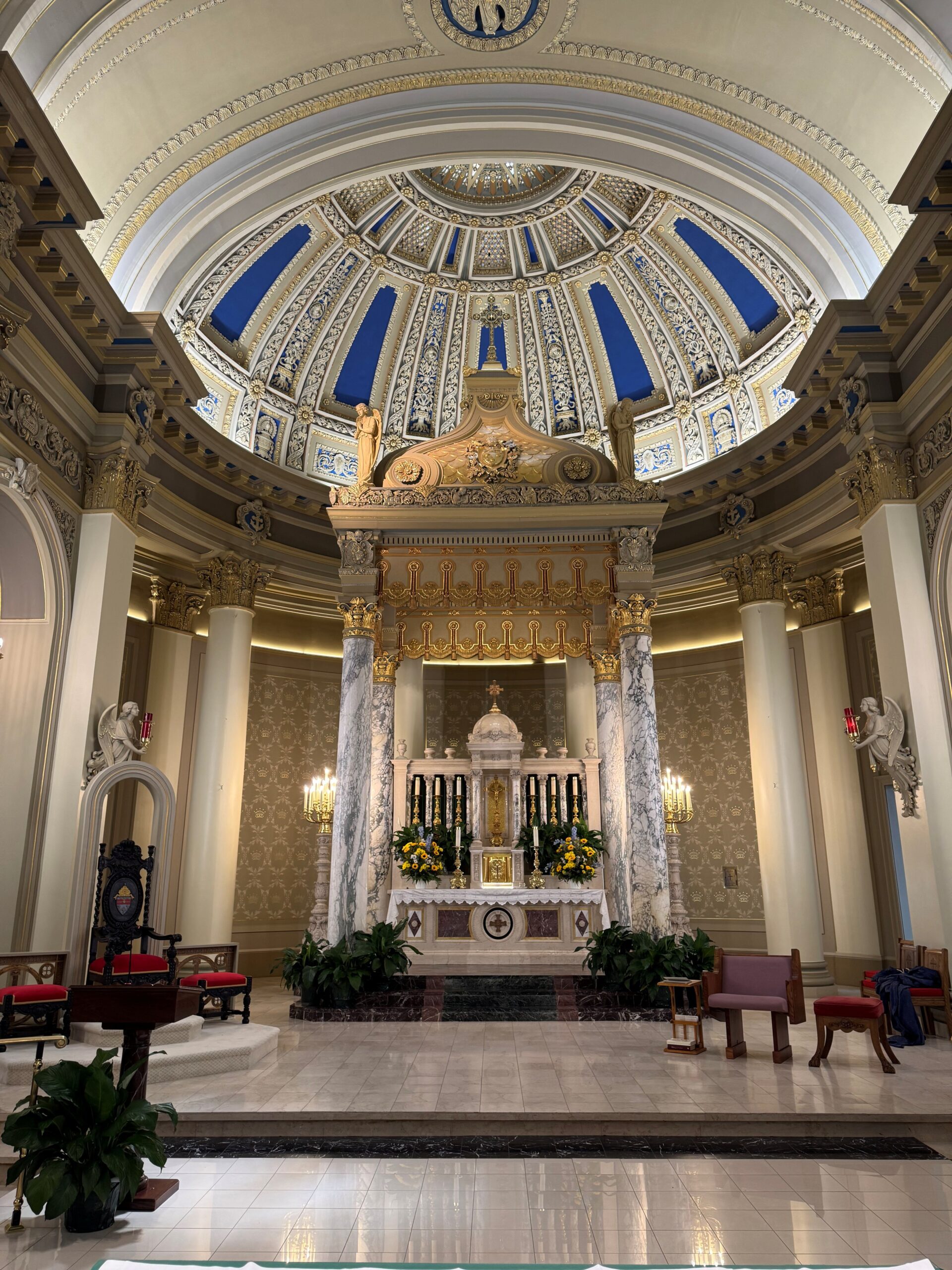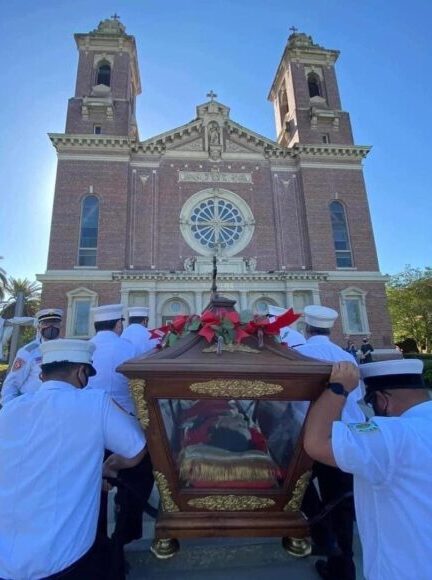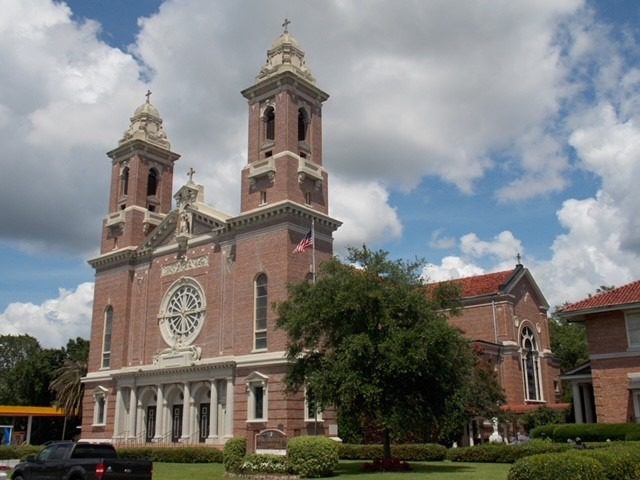“To God, most good, most great”
Hidden in plain view high above the six main doors that welcome the faithful to worship are the initials “D.O.M.”, an abbreviation for the Latin “Deo optimo maximo,” translated “to God, most good, most great”. Beneath it are the letters of the Roman numeral MCMXX, 1920, the year construction began on the magnificent structure which tells of the rich heritage of the people of Thibodaux from the early 1800’s.
In 1819, a small wooden mission church was built along Bayou Lafourche, the main thoroughfare of the bayou people. The first pastor of St. Joseph Church was Father Charles Menard, best known for his work in building the parish community and establishing outlying parishes. In 1916, the early church burned. A lovely stained-glass window commemorating this church can be found in the present church above the rectory side entrance.
In 1920, Monsignor Alexander Barbier, pastor from 1911 to 1935, initiated the construction and design of the present church. The exterior was completed in early 1923, and the first Mass was held on January 25th. Ornamental plaster and marble work on the interior were completed in 1931. Stained glass windows adorn what is now known as St. Joseph Co-Cathedral, portraying the events of the life of Christ, from the Annunciation through His Resurrection. The splendid Rose Window, which overlooks the main entrance to the church facing Canal Boulevard, is modeled after that of the Cathedral of Notre Dame in Paris.
The parishioners of St. Joseph Co-Cathedral are proud of their beautiful and historic church, which serves to give glory to God as a gathering place for prayer and celebration. Private and group tours are available by appointment only by calling the parish office in advance, 985-446-1387.

St. Valerie: Virgin, Martyr and Patroness of Thibodaux
1n 1867, Fr. Charles Menard, the founding Pastor of St. Joseph Church originally located on Highway 1, went to Rome to request a relic that he could bring back to Thibodaux for strengthening the faith of and catechizing the local people. Of the two relics offered him, Fr. Menard chose Saint Valerie, Virgin and Martyr. The relic was placed in the arm of a wax effigy resembling a young girl depicting St. Valerie. She was encased in a glass display box called a brier, gilded and decorated with copper, and made in the Netherlands. The crate containing the brier was shipped to the Port of Orleans in early 1868.
The effigy of St. Valerie arrived from across the Atlantic and was immediately transported to Thibodaux via Bayou Lafourche onboard the steamer Nina Simmes. When it arrived in Thibodaux on April 18, 1868, the brier was hoisted on a fire truck and taken to the Church of St. Joseph accompanied by a procession of approximately 4,000 people.

Research is still ongoing to discover more about the real identity of St. Valerie. However, the local people, especially the youth, grew very fond of her and considered her the patroness against natural calamities.
On May 25, 1916, fire broke out in the sacristy of the old St. Joseph Church located on Highway 1. The fire quickly engulfed the church and local people desperately tried to save what they could. Weighing almost 500 pounds, the brier containing the effigy and relic of St. Valerie was one of a few items saved by responding firemen. The firemen brought the brier to the Mount Carmel Convent Chapel a few blocks away, where it stayed until the new church was built. On April 28, 1940, the brier of St. Valerie was ceremoniously transferred aboard a fire truck from Mount Carmel Convent to its current location in St. Joseph Church.
From her arrival in 1868, surviving the church fire in 1916, and her transfer to the new church, St. Valerie has been associated with the firemen of Thibodaux. For 200 years, St. Valerie has been protecting Thibodaux from major disasters and natural calamities. Her umbrella of protection extends to the firefighters and their families, ancestors of those firemen who first welcomed her on her arrival, saved her from the burning church, transported her to her new home, and continue to honor her with an annual procession on the yearly anniversary of her arrival.

